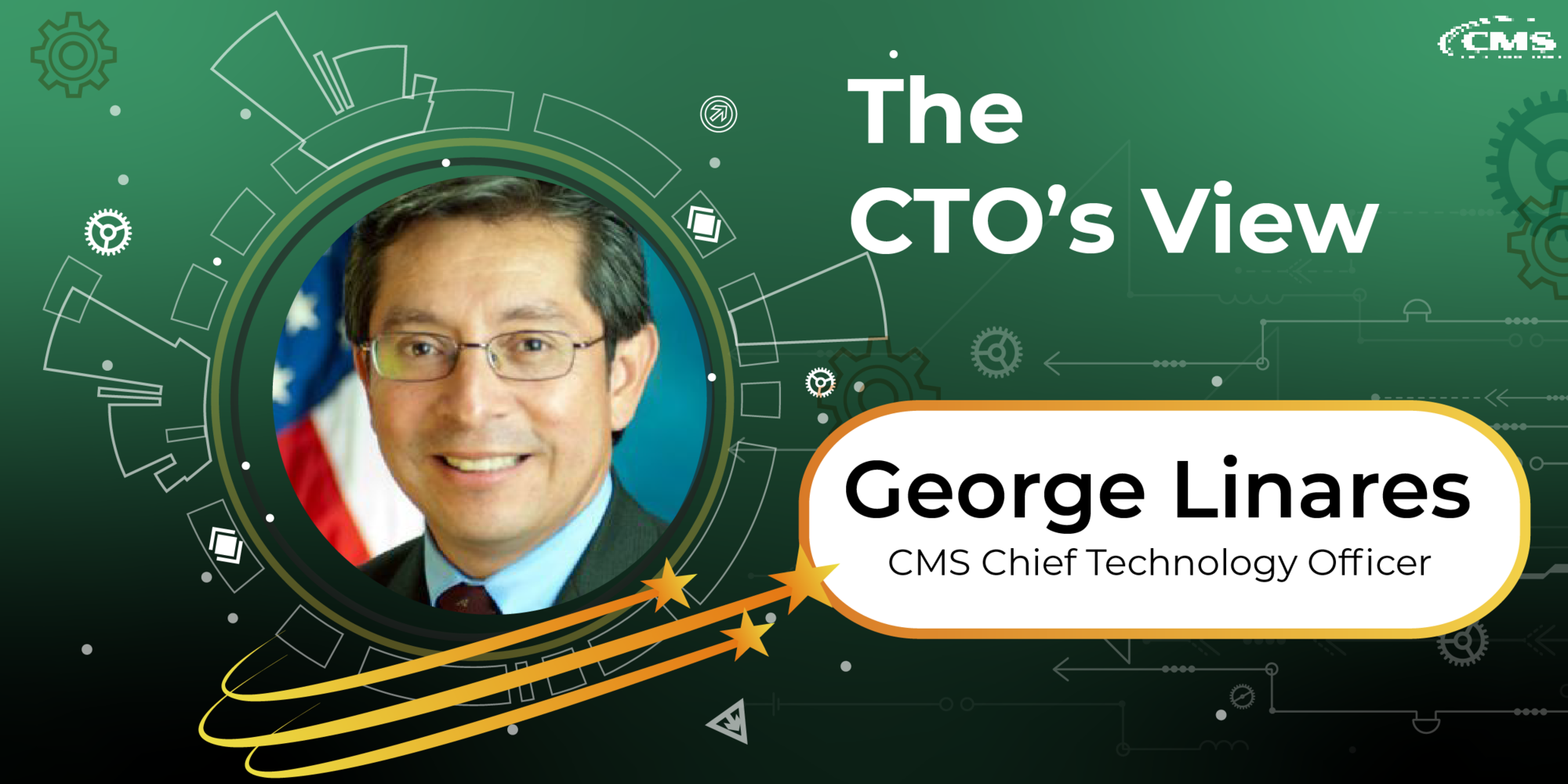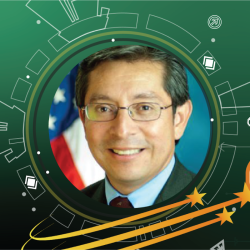Tech, Leadership, and Opportunity: The CTO View

Implementing new technologies in the workplace is an opportunity to elevate our work and evolve to meet the fast-changing world around us. But how do we acquire this technology? And how do we fund it?
This is the role of the Chief Technology Officer (CTO). The CTO develops innovative ways of bringing this technology onboard, applying careful consideration to every detail. OIT’s George Linares, CTO for CMS, shares how he uses his role in technology to emphasize the importance of a people-first culture.
Hesitation toward change is a feeling Linares is familiar with. For 20 years, he has seen the agency develop little by little to where it is today. Now, with the agency changing to become more operationally efficient and transparent, Linares is focusing his efforts on connecting, communicating, and shifting traditional technology thinking into a valuable transformation process.
“Sometimes I get so wrapped up in technology because I'm excited about seeing the things we can do with tech,” Linares says. “But when I’m talking to the staff, I’m making sure that I communicate, ‘What is the vision for this?’ The internal staff is getting into the weeds of everything, but they are being flexible and adjusting based on what the customer needs. To me, that is huge. So, supporting your people is the most important structure.”
We are all human, and constantly adapting to meet the needs of our customers can be overwhelming. From Linares’s perspective, a significant part of OIT’s mission is to ensure the technologies are meaningfully connected to the work of CMS.
CTO should stand for “Chief Opportunity Officer’’ because it’s about finding ways to get people to see value and deliver value. The CTO lives in OIT due to the technology aspect, but it serves all of CMS - making it an enterprise role. Effective collaboration and communication are key to helping our customers understand the value proposition, especially on complex projects where the value may not be obvious.
“During the early stages of the enterprise data lake project, we had a conversation about the merits of the technology where we realized that we could create a technology service that would reduce the burden for staff and speed up the data-access process,” Linares recalls. “I was blown away about its value to the agency. In my head, I could see the vision. But the message of communicating this out to our users and consumers is a challenging feat. There is a CMS way to communicating clearly and that is an art that I am still learning.”
The key to creating connections is having the influence to be present, and the language to build bridges between what technology can offer and what the business needs of our customers are.
Rick Lee, Senior Technical Advisor at OIT, gives us a look into how Linares values opportunity and drives credibility.
“One of George Linares’ superpowers is being able to look at granular technical aspects and align it to business value and user need,'' Lee says. “I sit in on meetings with him and hear him deftly negotiating implementation details, but always through the lens of the user. Which is pretty unique, actually. He is not a tech-for-tech’s-sake dude.”
Most organizational changes are harder to implement if you don’t know what happens behind the curtain. Linares is learning the backstage blueprint to help others make it to the stage. We can complement those efforts by voicing what we need from each other and providing honest feedback when the opportunity arises.
“Collaboration doesn’t happen with strangers,” Linares says. “Relating to each other is how we can understand the importance of what we do, and I have learned so much.”

